Why knocks out the machine in the electrical panel

Surely most of our readers are familiar with the situation when the electricity goes out at home, while the neighbors have everything in order. First of all, you need to check the circuit breakers installed in the switchboard. Most often, it is their disconnection that causes the home network to de-energize. In this article we will talk about why an automatic machine knocks out in an apartment or house. The reasons for this phenomenon can be different, and it is important to know them in order to prevent unpleasant consequences associated with the failure of electrical appliances or fire wiring.
Content
Features of the circuit breaker
To understand the reasons for the operation of the circuit breaker, you must first answer the question of what this device is for and what functions it performs. The features of the AV work are as follows:
- The main task of the device is to protect the electrical wiring and household appliances connected to it from too powerful current arising for various reasons.
- The device is mounted on a phase circuit, the break of which occurs when the bag is turned off. If the machine has two or more poles, then when it is triggered, the zero circuit will also open.
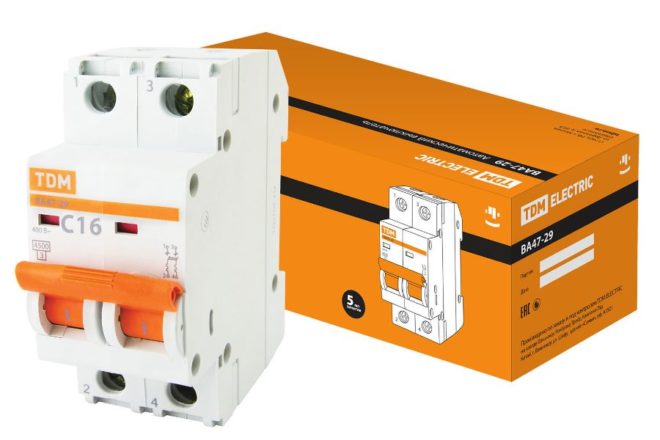
- AB can de-energize the network both during manual shutdown and in the event of an emergency that can lead to damage to the circuit elements.
Knocks out a machine gun: what are the reasons?
Now we directly turn to the question of why the machine knocks out in the dashboard. The machine can operate for the following reasons:
- Overload in the power grid.
- Failure of one of the devices included in the circuit.
- Breakdown of the lighting fixture.
- Defective protective device.
- Short circuit.
Any of the listed reasons can lead to the fact that AB will knock out. Let's consider each of them in more detail.
Overload
This is the name of the situation when the value of the current in the circuit exceeds the nominal for which the protective switch is designed. For a better understanding, let's give an example.
To work with outlet groups, AB are mainly used, the rated current of which is 16 - 25 A. This indicator corresponds to a total power of 3.5 - 5.5 kW. Suppose that an electric stove with a power of 3 kW, an electric kettle for 1.3 kW, and a microwave oven for 2 kW are connected to the outlet group, for protection of which an automatic switch designed for 25 A is installed.
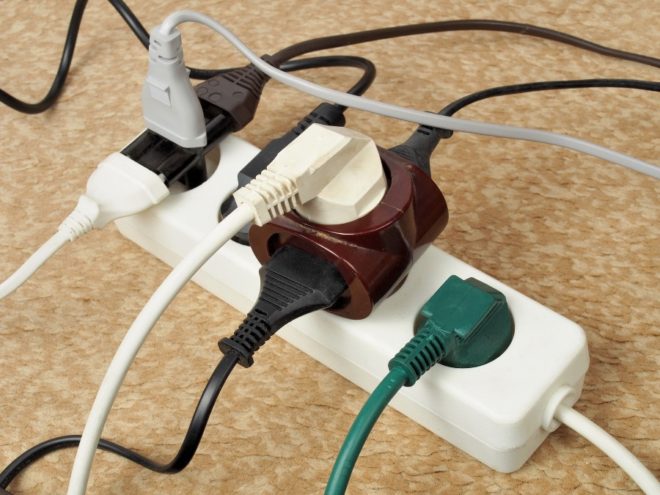
If we add up the power of the listed household appliances, then we get a load value of 6.3 kW. Considering that the maximum load supported by the protective device is 5.5 kW, the simultaneous activation of all three devices will lead to the machine knocking out.
To avoid this, you should not take lightly the calculation of the total load in the circuit. If connecting the device to a socket group will result in an excess of the total power, it should be connected to a different circuit.
An example of incorrect calculation of the posting on the video:
Do not try to solve the problem by installing a machine with a higher power rating. If its rating exceeds the one that the electrical wiring can withstand in its cross section, problems are inevitable. In this case, under the influence of too much current, the cable will heat up until the insulating layer melts and causes a short circuit, and in the worst case, a fire.In this case, the machine will continue to supply current to the circuit until a short circuit occurs. Therefore, if a cable with a cross section of 2.5 mm² is used when laying the line, the AB rating for its protection should not exceed 16 A (for an aluminum conductor) or 25 A (for a copper conductor).

Household appliance breakdown
If you plug in a faulty home electrical appliance, then the likelihood that the machine will "shut down" is also quite high. Let's take an example how to find the device that caused the problem.
Let's say an electric stove, microwave and oven are included in the network in the kitchen. A machine gun was knocked out in this chain. To determine the cause of the problem, proceed as follows:
- Disconnect all units from the network.
- We turn on the machine. If it does not knock it out without load, the wiring and protective device are working.
- We connect household equipment one by one. If, for example, when the stove and the microwave oven are turned on, the chain works, and when the oven is turned on, the machine knocks out, the oven is faulty and must either be changed or repaired
An example of diagnostics on video:
Some types of household appliances (such as dishwashers or air conditioners) are connected directly to the mains, rather than through an electrical outlet. Such devices must be disconnected from the protective device installed inside the switchboard - this is the only way to check them.
Malfunction of lighting devices
Now let's figure out why the machine knocks out when you turn on any lighting device. In any case, the reason is a malfunction of the latter, which may be as follows:
- Short circuit in the lamp base. To find the faulty element, you need to unscrew them all and, screwing in one at a time, turn on the lighting device. When, after screwing in the next light bulb, when the light is turned on, AB is triggered, this means that the cause of the problem has been found. A discovered bulb with a broken base must be replaced with a serviceable one. Of course, if the only light bulb in the device burns out, and the machine is knocked out, the cause of the malfunction is obvious, and there is no need to waste time looking for it.
Please note that sometimes the bulbs burn out due to the fault of a faulty switch - this can also be accompanied by the activation of the protective device.
- Burning contact between the power cable and the internal wiring of the device. To eliminate the malfunction, it is enough to clean the contact, and then insulate it with high quality.
- A short circuit inside the transformer of an LED chandelier. If the inclusion of such a device leads to a knocked-out machine, there is a high probability that this is the problem. To troubleshoot a non-working transformer, it will need to be replaced with a serviceable one.
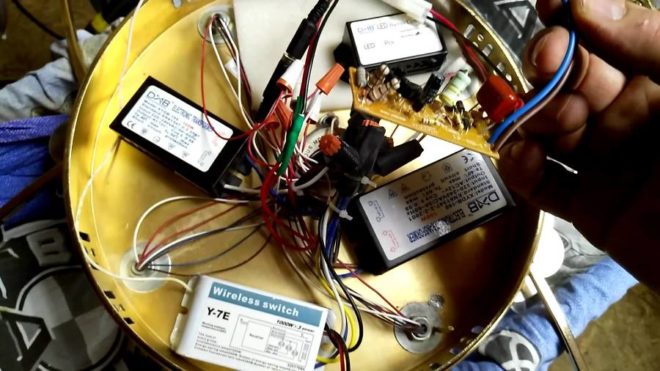
As you can see, the reason for switching off the AB when the lighting device fails is most often a short circuit. At the same time, the wiring does not have time to heat up to a critical level, therefore, the operation is triggered not by a thermal, but by an electromagnetic release.
Failure of the circuit breaker
Malfunctions in the machine itself can also cause a sudden power outage, but this happens very rarely, especially when it comes to models from well-known manufacturers. But if there is a suspicion of a malfunction of the protective device, it should be checked by connecting a new one, obviously working. It is also possible to disconnect the circuit from this AB and connect it to the adjacent bag in the switchboard. If these automata also work, the problem must be looked for elsewhere.
Even an outwardly serviceable machine gun can knock out. Video example:
The reason for the failure of the circuit breaker can also be its long-term operation, during which there is a natural wear of its components and deterioration of their technical parameters. This also applies to releases. As a result, the device may operate even if the conductor is slightly hot. Such AB must be replaced.
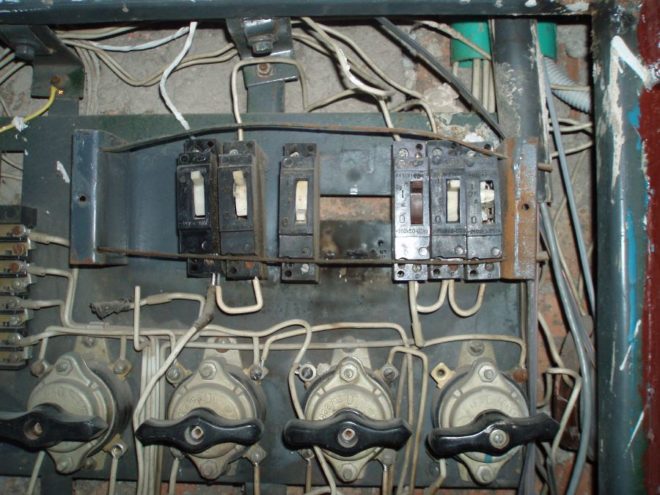
What causes the differential circuit breaker to knock out?
A differential type circuit breaker can de-energize the network for the same reasons as a conventional one (if the wiring is very hot or a short circuit has occurred). But since in its composition, in addition to releases, there is an RCD, it also reacts to the leakage current, therefore, it is not so easy to find the reason for the operation of the difavtomat.
If such a device works for no apparent reason, a more thorough check should be carried out.
Inspect the breaker, if necessary, tighten the contacts. Check the condition of the wiring in the switchboard. If a phase conductor touches a grounded metal case, this can cause knocking out the differential circuit breaker, although it will not lead to a short circuit.
Let us assume that no faults were found in the panel. Consequently, there is a current leak in the protected electrical circuit. Its reasons may be as follows:
- Defective electrical appliance. If it breaks down on its body, the RCD of the difavtomat is triggered, the task of which is to prevent people from being shocked.
- A short circuit between the protective grounding and zero phase wires, which is sometimes done by inexperienced electricians.

- Heavy thunderstorm. Powerful electrical discharges often cause knocking out of the differential protection device. In this case, it is better not to turn on AB until the thunderstorm subsides.
- Worn insulating layer of old electrical wiring. In this case, the electric current leaks through microcracks and triggers the machine. Since such damage is difficult to see with the naked eye, and the defective cable does not heat up, it can be difficult to detect the problem.
- A sunken "Test" button on the device or a damaged housing part also triggers the device. In this case, the defective device must be replaced.
- Installation of the machine not according to the scheme.
The differential automatic device should be checked from time to time by pressing the "Test" button with the load disconnected. A working device should turn off. If it continues to work, this indicates a violation of the protective function and the need to replace the device.
Why does the RCD knock out - clearly in the video:
Faulty wiring
The reasons for disabling the AV can be:
- Worn cable insulation layer.
- Poor contact at switch or electrical outlet.
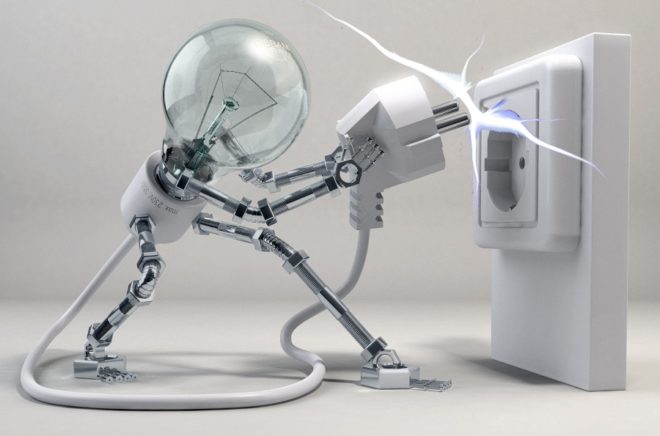
If the problem is in the switch or outlet, then to eliminate the malfunction you need to open the element, clean the burnt place and connect the cable correctly. With worn insulation, especially when it comes to hidden wiring, it is not easy to find the problem.
In this case, a special device will help - a locator, with which you can detect cable damage, even if it is hidden in the wall.
Having determined the location of the malfunction, it must be opened and the malfunction eliminated, and then the groove must be repaired.
Conclusion
In this material, we figured out what reasons, in addition to an excessive heating cable, the circuit breaker can be triggered. Now you know what to do when the light bulb burns out with the simultaneous shutdown of the protective device, as well as how to troubleshoot if the wiring inside the electrical element burns out or if a household appliance breaks down.





